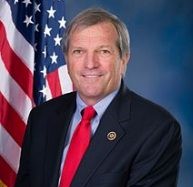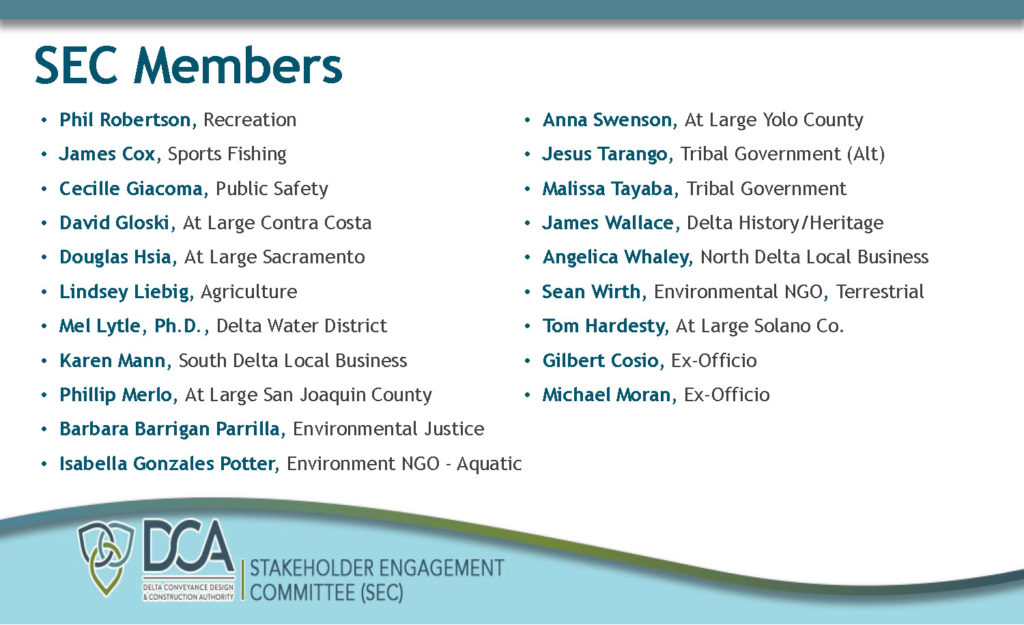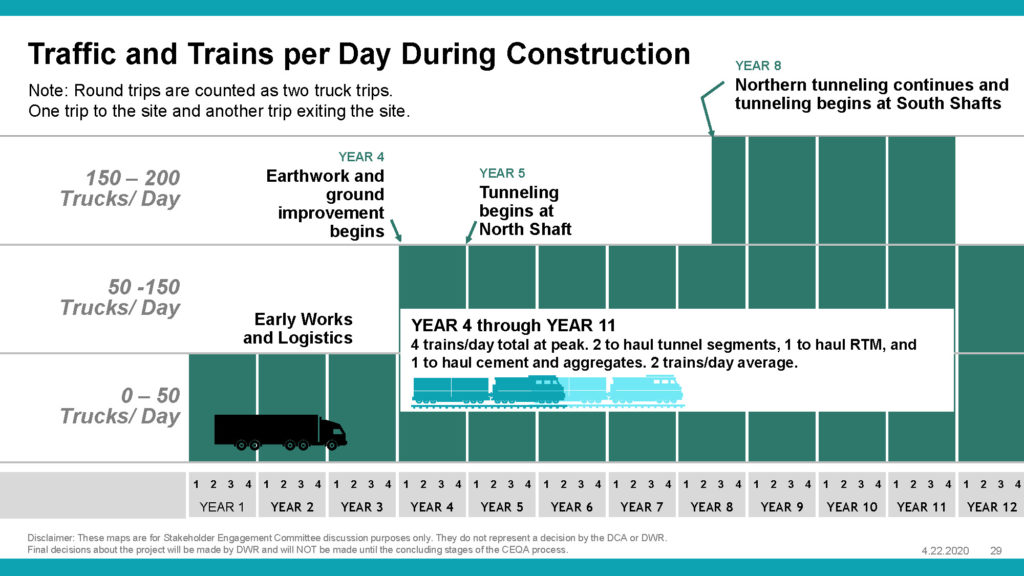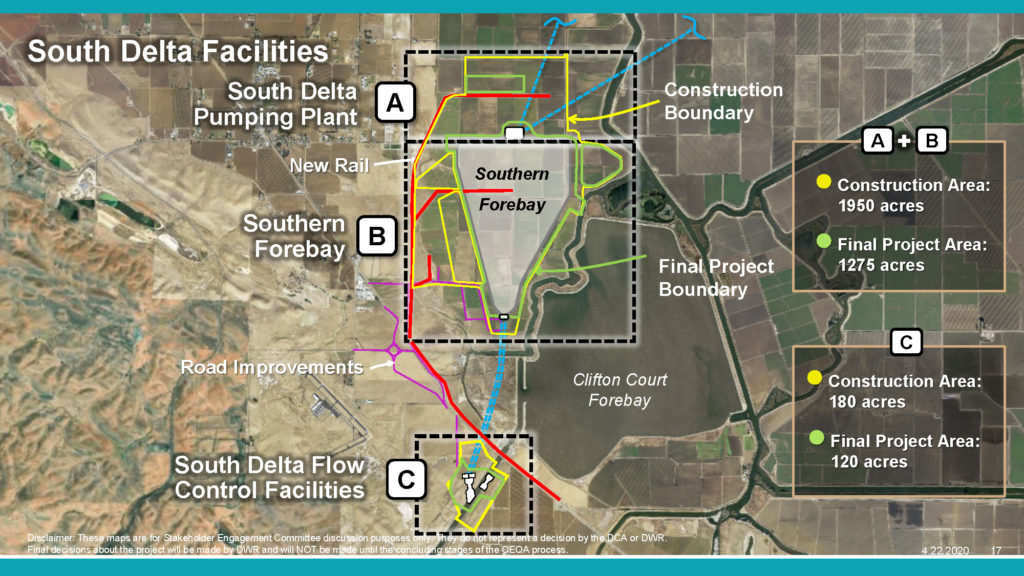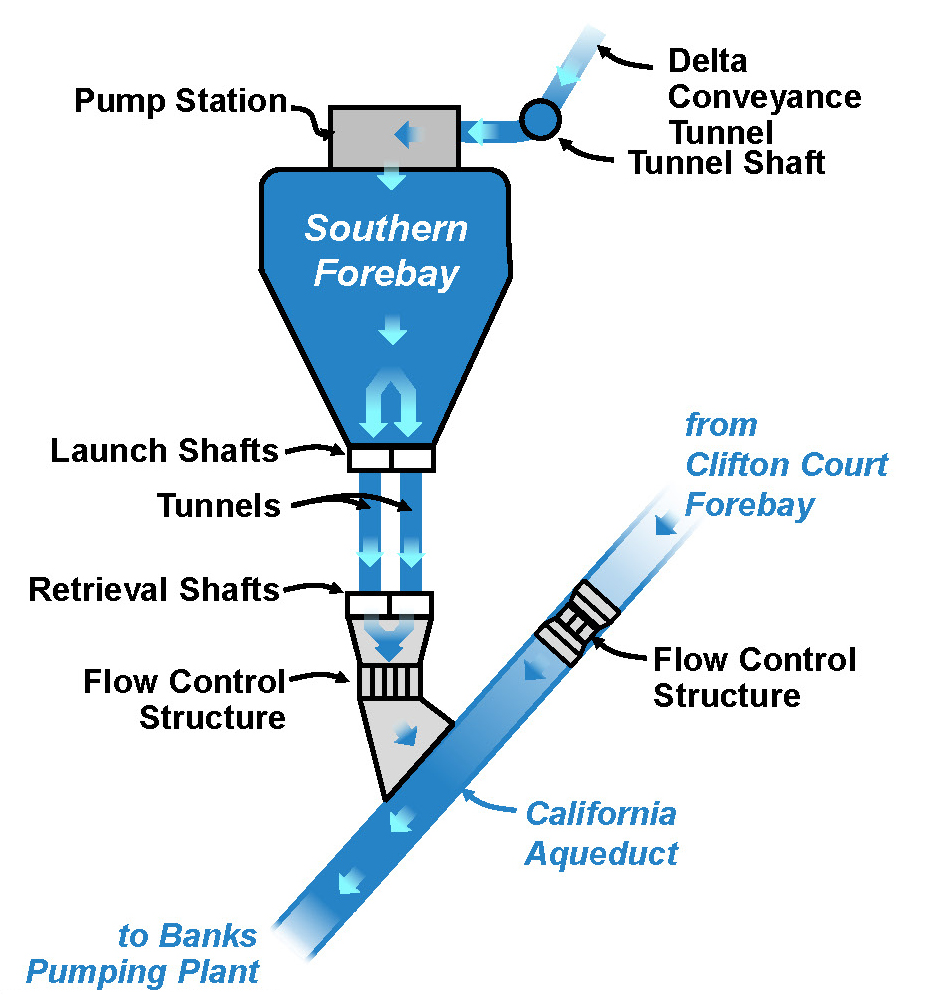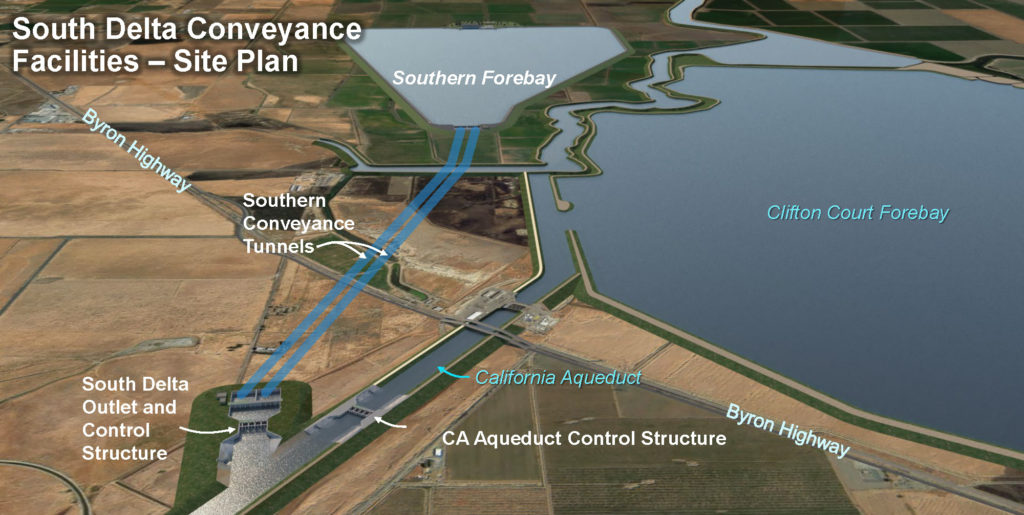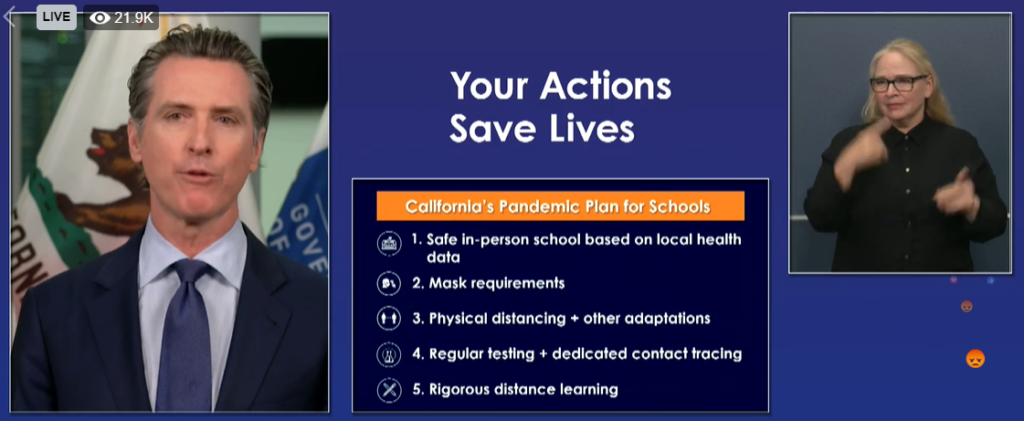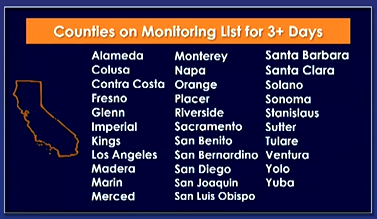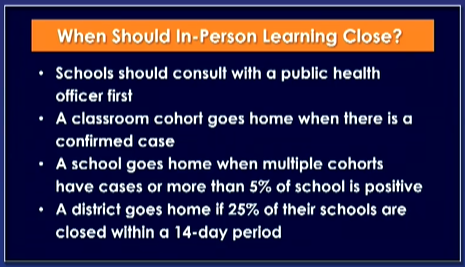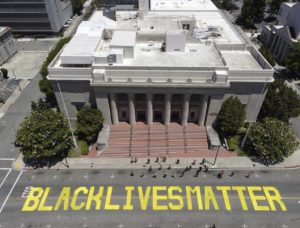Congressman Mark DeSaulnier (CA-11) will host a telephone town hall to discuss coronavirus, the classroom, our community, and what comes next when school resumes in Contra Costa on Thursday, July 23rd at noon.
Congressman DeSaulnier will be joined on the call by Dr. Bill Walker, former Director of Health Services and current Director of Legislative and Governmental Affairs for Contra Costa Health Services, as well as Contra Costa County Superintendent of Schools Lynn Mackey. During the event, Contra Costa residents will have an opportunity to ask questions about the upcoming school year and local districts’ plans for instruction.
Coronavirus, the Classroom, and our Community Telephone Town Hall
Thursday, July 23, 2020
12:00 p.m. to 1:00 p.m. PT
This event is open to the public.
To RSVP and submit a question, click here: https://tthm.wufoo.com/forms/teletownhall-with-congressman-mark-desaulnier/
Read MoreCounty residents opposed to project work to limit impact and secure benefits if it is built
“We want to make sure they don’t screw anything up,” – David Gloski, Stakeholders Engagement Committee Member
By Allen Payton
What was planned as two tunnels beneath the California Delta to divert fresh water from north of the Delta to areas south, is now a single tunnel plan that is referred to as the Delta Conveyance Project (DCP). The effort is being led by the Delta Conveyance Design and Construction Authority (DCA) which was formed by and makes recommendation to the California Department of Water Resources (DWR).
In the first part of this two-part series, you read about the background and latest efforts to move the project forward. In this part, you will hear from local voices who serve on the Stakeholders Engagement Committee (SEC) and what they are doing to both fight the tunnel, and if it is built to limit its impact and to secure any benefits for our county and the Delta.
Stakeholders Engagement Committee – Local Voices
Because Contra Costa County and the water districts in the county either oppose or are neutral on the Delta tunnel project, no agency from the county is part of the DCA. But there are three people who live and one who works in Contra Costa County and serve on the Stakeholder Engagement Committee. They are Bethel Island resident and retired engineer David Gloski, Discovery Bay resident and real estate appraiser Karen Mann, Antioch resident Jim Cox, a retired fishing boat captain, and Oakland resident Michael Moran, who works for the East Bay Regional Park District as Supervising Naturalist at Big Break Regional Shoreline Visitor Center at the Delta in Oakley.
David Gloski, The Engineer – At Large Member
“I don’t want to understate that I’m against it and I appreciate the people fighting it,” said Gloski, who volunteered to be part of the SEC at the urging of others who also oppose the tunnel. “But I, having a home on the water and having an engineering background – and this DCA SEC group is more engineering focused – we want to make sure they don’t screw anything up.”
“The majority of the people on the stakeholder committee are probably against the tunnel,” he stated. “It includes the lady (Barbara Barrigan-Parrilla) from Restore the Delta. We’ve been effective in preventing them from doing things that don’t make sense and would negatively affect people in Contra Costa.”
“To me, they walk and chew gum at the same time. They’re working on designs and plans without having the permits. They have to do some of it or they don’t know what they’re asking to permit,” Gloski explained. “Similarly, we aren’t doing ourselves any benefit by just opposing it. Because if it does go through, we can get a lot of things done, like new roads, and parks. But you have to participate.”
“I’ve raised my hand to say, ‘if you’re going to build it, let’s get good things out of it, and make sure they don’t screw things up,” he reiterated. “I think the county is mistaken for not being more involved. The DCA made changes because of our inputs. Unfortunately, I’m not sure the inputs are the best from the county’s perspective. For example, an original plan included road and bridge improvements which were eliminated when we were successful in having a maintenance shaft moved further away from Discover Bay. So, you might have won the battle but lost the war.”
“I think we might benefit from more representatives. But right now, the county is just fighting it,” Gloski added.
To give your input to David Gloski, you can join his Facebook page, David Gloski DCA Stakeholder.

Mann expressed her concerns for the location and proximity to Discovery Bay of one potential Maintenance Shaft. From DCA 2020-05-27-UpdatedMapBooks.
Karen Mann – South Delta Local Business
Mann, an appraiser in Discovery Bay, is another member of the stakeholders committee who opposes the tunnel, as the issue literally hits close to home for her like Gloski.
“I’m fighting for our Delta,” she said. “As I’m talking to you my grandchildren are loading the boat, because that’s what we do as a family. We spend time on the Delta.”
“I’m an active boater. I skipper my own 37-foot boat. I’m a very able-bodied skipper. My dad had me at the helm since I was 9 or 10 years old in San Pablo Bay,” Mann explained. “So, I’ve described to this group the terror that I had when I encountered a barge in the middle of Old River. That left me about 25’ (to get by it). My boat is 12-feet-wide. I could feel the propellers of the tugboat drawing me toward that barge. My boat weighs 22,000 lbs. Imagine if that was a ski boat with inexperienced skiers or a family with a father and his kids on board.”
“The number of barges every day that they were talking about loading, I told them ‘you better think twice. You will have lives of families and boaters on your hands,’” she continued.
Effort to Postpone Meetings & Work Due to COVID-19 Unsuccessful
“Through this whole pandemic thing, myself and a bunch of others have said ‘let’s hold off on these meetings’ because we can’t meet with our people,” Mann stated. “The chief engineer said, ‘we’re going to move forward, and we hate to leave you behind. But that’s how it goes. Governor Newsom wants this going.’”
“I piped up and said ‘it appears to me Gov. Newsom his been very busy with this pandemic thing and his three-hour-long press conferences each day, and the Delta tunnel is probably not at the forefront of his thinking,” she shared. “For us to be told, ‘no, that’s out of the question, we’re on a timeline’, this is just not right.”
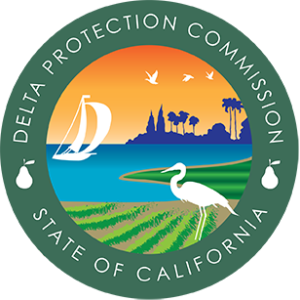 According to a report by the Sacramento News & Review, the effort to postpone the committee meetings and the work got a Sacramento County Supervisor and the Delta Protection Commission involved.
According to a report by the Sacramento News & Review, the effort to postpone the committee meetings and the work got a Sacramento County Supervisor and the Delta Protection Commission involved.
“The dust-up has caused Sacramento County Supervisor Don Nottoli to challenge one state official about transparency, while the Delta Protection Commission has officially asked California planners to halt their work on the tunnel during the virus outbreak. So far, that hasn’t happened,” reported the SN&R.
Contra Costa County Supervisor Diane Burgis serves on the Delta Protection Commission, which “is supposed to safeguard the environmental and community health of the estuary as part of California’s landmark 1992 Delta Protection Act.”
But the committee meetings are continuing, just online for now, as most if not all other government meetings are currently throughout the state.
No Project Funding or Route, Yet
“I asked them where are we getting the money from? Apparently, there’s no checkbook. There’s no limit. There’s no talk about expenses. It’s like carte blanch. Money is no object,” Mann stated. “There isn’t an official route, yet. Because they’re trying to decide if there is going to be a central corridor which would be within 600 feet of the Discovery Bay water treatment plan and homes on the golf course.”
“That’s not the best of it,” she continued. “The best of it is they’re using their maps of that central location they would have taken that tunnel underneath the only waste treatment plant in the area.”
“They would also be going through our artesian wells,” Mann added.
“If there were any problems, “they would shut off the water and waste treatment for Discovery Bay. How could we live here? We’re not a third world country,” she said with a laugh.
“I’ve been very passionate about those two items,” Mann stated.
She, Cox and Moran all expressed concerns about trucks on Highway 4 east of Discovery Bay and how the committee’s efforts got that stopped.
“There was also going to be a maintenance shaft near Discovery Bay which would require truck traffic on Highway 4. Heavy duty trucks carrying the muck and dirt. Those bridges are old and couldn’t handle it,” she explained.
“Now they’re talking about using the eastern corridor closer to Stockton. But they told us ‘don’t get too excited. Nothing is decided. We’ll take your recommendations, but we will make our own decisions.’” That didn’t sit well with Mann.
“Is this how government is supposed to work?” she asked. “I will say they did listen on the barge issue. I think health and safety got them.”
Fire Marshal, DB Town Manager Shocked
“We took that information to the fire marshal and Discovery Bay Town Manager and they were shocked,” Mann shared. “Neither one of them knew about any of it. They both wrote impassioned letters. We have three fire stations that serve 128 square miles. The engineers thought we had nine stations.”
“So, who’s going to handle the issues…with a project like this?” she asked. “Someone’s going to get hurt and they’re going to need EMT’s. I guarantee you one of their trucks will have an accident and block traffic for hours, if not kill someone.”
“I’ve been sending the chief engineer photos of truck accidents and concerns that we have for our health and safety,” she continued. They had no idea of traffic count. They’re using traffic counts from five years ago from San Joaquin County and they don’t keep track of traffic on Highway 4 and the bridges in our county. So, their traffic counts are completely inaccurate.
“So, I’m wondering who’s really in charge here,” Mann said. “We’re supposed to trust them with building a tunnel 150 feet under ground? If they don’t have this basic information how can they handle the bigger issues?”
“The Delta has been something in my family since I was a child,” she shared. “It’s a way to keep families together. So, when you say Delta you’re talking about families. This life is too short, and you have to enjoy it while it lasts.”
Mann is both a residential and commercial appraiser, which is why she represents the business community on the committee.
She’s also the president of Save the California Delta Alliance.
“We have an attorney that got them to back out of the other tunnel project,” Mann shared.
“It’s just a bunch of homeowners. This is our home. The waterway is our backyard. Our playground. Don’t mess with it,” she concluded before heading out into the Delta for the weekend on the family boat.
“Same Old Song and Dance” on Fish Protections Says a Frustrated Jim Cox – Sports Fishing
Antioch resident Jim Cox ran a six-pack, sport fishing charter boat for 23 years and has been in the Delta since the early 1980’s and is now retired.
“I’m there representing fishing interests,” he shared. “It’s been a very frustrating thing to be involved in. They want us to come back with input from our constituents. The most common thing I hear is ‘what’s going to happen with Clifton Court?’”
The Clifton Court Forebay is where the water is collected south of the Delta before being pumped further south.

Delta Smelt. Photo from DCA SEC.
“When the current is flowing in there, it’s so strong the fish can’t get out,” Cox explained. “The screens on the pumps are not designed that well. Estimates are anywhere from 15-50,000 striped bass that are trapped in there. They’re only 8 or 9 inches but they’re fully matured fish.”
“They say Clifton Court Forebay is a separate project,” he continued. “I’ve had conversations with Terry Buckman from DWR. The Delta Improvement Act of 2009 has the two goals of habitat restoration and less reliance for water supply. They’re definitely focused on the water supply.”
“They call it EcoRestore, which is part of DWR and the ironic thing is they say ‘we’re not working on that for another year or so.’ This committee will be disbanded before then,” Cox stated.
“This is the same song and dance that fishermen have been told for the past 25 years,” he complained. “In 1994 there was the CalFed agreement. The water contractors were supposed to build state of the art screens across Clifton Court so fish couldn’t get in. But it’s still never been built. “
‘Most of these DWR folks are in their 40’s so they weren’t around…and they’re taking the word for it from others at DWR,” said Cox.
“The real problem is predation (preying of one animal on another), primarily for striped bass,” he continued. “It is a problem because the current flows in there, year-round, 24 hours a day. Larger fish just stick around at the entrance and pick off the smaller fish. They try to make it sound like it’s the striped bass. It’s not. It’s the fact they never built the screens.”
“We were told Fish and Game have plans to remove predators. They have no plans for any such thing. They say it’s a useless idea. Once you get rid of one predator another species will move in,” Cox shared. “Then they said the problem is the outer screens. There aren’t any outer screens. It consists of rabbit wire fence to keep boats and floating logs out of Clifton Court. It has nothing to do with fish.”
“They won’t say anything of how they’re going to make it better. This is why it’s becoming a frustrating endeavor for me,” he stated. “On the one hand they are being responsive to some complaints. But it all revolves around building the tunnel.”
“They won’t even listen to the fishermen. I’ve been tempted to resign a couple times over this. But, if I’m not there who’s going to bring this up?” Cox asked, rhetorically. “First, they talked about having the committee a year. But now they’re talking about extending it.”
“It’s very frustrating trying to get them to listen,” he added.
On finances Cox said “we get told things in bits and pieces. The plan is for all of this to be paid for by the water users, the water contractors. The fine print is they’ve agreed to this in theory, but not in reality. They’re not going to agree to anything until they see the final plan. Over the last year, they’ve been trying to do what took them three years originally on the twin tunnels, to finalize this plan, to be able to move forward.”
“When this COVID thing hit, they said everyone wants to continue to work on this. That’s BS,” he said echoing Karen Mann’s comments. “No one wanted to continue to do this. But they kept pushing on this because they have financing deadlines. So, nope. They’re going to keep on going.”
“I feel in a lot of ways this committee is just going through the motions. I’m starting to feel like a pawn in a chess game,” he said with a chuckle.
Another financial issue Cox shared about was the pay for the DCA’s executive director Kathryn Mallon, who is earning $47,000 per month in her role. That’s in spite of the $54 billion deficit the state is projecting due to the impacts of the COVID-19 pandemic.
Another report by the Sacramento News & Review covers that issue and the opposition from the water agencies that are expected to reimburse the state for her compensation.
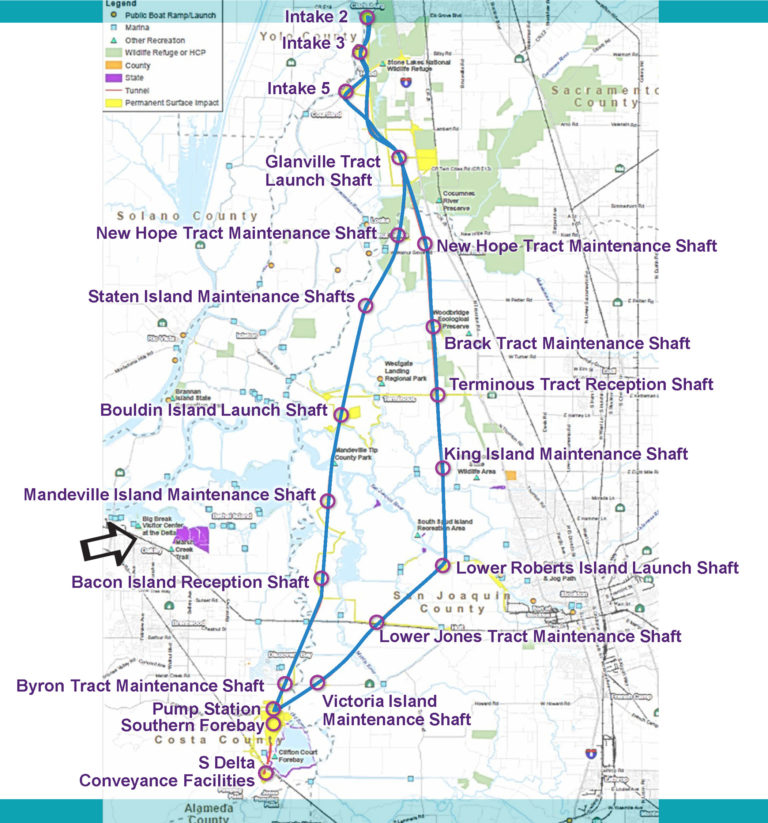
Proximity of proposed sites to existing recreation facilities. Arrow points to Big Break in Oakley. From 2020-04-22-SECMeetingPresentation.
Parks District Employee Offers Different Perspective: Mike Moran – Ex-Officio
Mike Moran, although an Oakland resident, represents Contra Costa County interests on the SEC, having worked in Eastern Contra Costa County for 26 years, as of August 1st. He works for the East Bay Regional Park District at the Big Break Regional Shoreline in Oakley.
“Big Break was an asparagus farm that flooded in 1927,” he shared. It’s a 1,688 acre park that’s mostly under water. The East County trail runs through there. Plus, they have a 1,200 square foot model of the Delta on the ground.
“In my position at the park commission and the SEC, we don’t take a pro or a con on this issue. We try to interpret this thing and why it’s being proposed, why it’s being opposed, and not just build it or don’t build it,” Moran explained. “I’m an ex-officio giving folks’ perspective from the East Bay Regional Parks point of view. There’s not a direct correlation on the tunnel.”
“We have land out here and we have folks paying taxes to get access to that land. So, what does this mean? What is the impact going to be where our constituents live?” he asked.
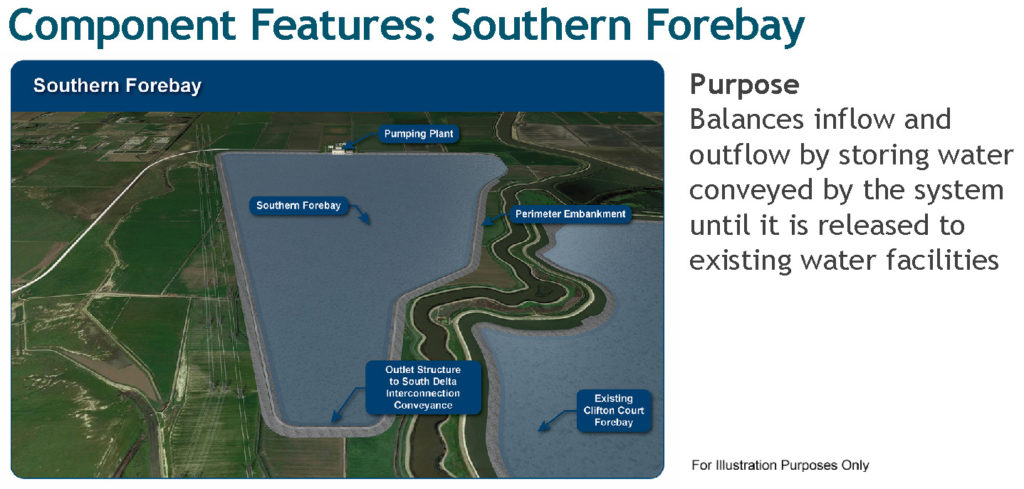
Proposed new Southern Forebay adjacent to Clifton Court Forebay. From 2019-12-11-DeltaConveyanceSystemOverview.
Moran also studied fisheries in grad school. Asked about the fish and Clifton Court Forebay that Jim Cox is concerned about, he said, “It’s part of the state water project, right now. The new forebay would be right next to Clifton Court, built to the west.”
However, Cox responded with, “The fact is that they still intend to use Clifton Court fifty-percent of the time. If the tunnel water was the only water heading into the canal then it would be fine, but that is not the case. Clifton Court will still be part of the water system and that is why I feel improvements to it should be part of the project, not a separate project.”
“The Harvey Banks Pumping Plant is part of the State Water Project. That water is sent through the California Aqueduct and the South Bay Aqueduct serving Alameda and Santa Clara Counties,” Moran explained.
“The feds will require an Environmental Impact Study on the project because it affects federal waters. That’s the Jones Pumping Plant, which is part of the federal water project. That water is pumped through the Delta Mendota Canal,” he shared.
“At the Clifton Court Forebay, as the water is drawn in, there’s a screen that screens out the fish. But it’s old school. It’s an old screen,” Moran explained. “Jim’s saying if we’re going to put in these high-tech screens north of the Delta, let’s do it at Clifton Court.”
“The screening for the proposed tunnel will be located in Hood (north of Elk Grove) on the eastern side of the Sacramento River. There will be three intakes and those would have brand new, top of the line fish screens,” he continued. “So, no fish will be put in that tunnel beyond those screens.”
“That’s one of the selling points for this whole project,” Moran stated. “What we have now, is the diversion is over the surface across the Delta. So, we’re bringing in both water and fish.”
He provided some history to the diversion of Delta water.
“The idea of diverting water, moving water from the north and east, through the Delta is from the 1910’s,” Moran shared. “A lot of the facilities we have now, are not the same thing, but they’re based on Robert Marshall’s plans. He ran the national parks and was pushing this big project of moving water around California. So, that’s part of the rationale of what we have, now.”
He also shared that “Antioch sued upstream water users in 1921 because of too much saltwater. So, this is nothing new.”
“Antioch is way ahead of the game putting in a brackish water plant. That’s a big, bold move,” Moran state. “But what are we going to do with saltwater intrusion up to CCWD?” (See related article)
Asked how the tunnel is a solution to the saltwater intrusion he answered, “It’s coming. If we divert or not, saltwater is coming. How do we prepare for that? In Antioch we build a desal plant. For those south of the Delta it’s a tunnel.”
“The way we’re doing things now, is water flows from the Sacramento River to the rest of the Delta. The pumps in Byron then pump it south,” Moran continued. “This water used to flow down the river and out into the Bay. Sometimes during the year, we have reverse flow, with the water from both the Sacramento and San Joaquin Rivers. When folks started taking water out in the Central Valley, less water comes out of the San Joaquin River. It was dry for 60 miles as recently as 1994. That was rectified through a court case.”
Because the San Joaquin River is diverted before it reaches and “punches through the Delta”, farmers in the Delta have been relying on Sacramento River water.
“The Sacramento River, high quality, great water, it’s pulled down to the pumps. Not all the water, it’s less than half,” he said. “That goes against the natural flow and messes up the ecology.”
“We’ve gotten a lot of benefit over the past 100 years,” with the current system, Moran shared.
“So, if we don’t do something, if saltwater comes up, or if a levee breaks or a beaver chews through, that’s going to stop the flow of water.”

Rendering of proposed Pumping Plant Site Plan at the Southern Forebay. From 2020-04-22-SECMeetingPresentation.
“Much of the land in the Delta is under sea level because of that peat soil, which is great for farming,” he explained. “But because of decisions made over 100 years ago, because people in the Delta communities and economies, and their way of life, it’s not sustainable.”
“We’re only taking water out when there’s enough to come through,” said Moran. “Like we’re doing, now when there’s Delta Smelt at the pumps, and we have water quality going down the tubes, the feds tell them to stop pumping.”
“It’s these local folks who are members of the committee saying, ‘wait a minute, we have lives that will be affected, too,’” he shared about his fellow SEC members. “The premise is let’s pretend this is getting built. If that’s the case, all you folks around the Delta who have this local experience and expertise, to advise the experts from the DWR.”
“So, that the water can be used all year round. That’s the point of it,” Moran continued. “Is there enough storage south of the Delta? If you’re going to pump water out of the Delta where are you going to store it? There’s the San Luis Reservoir, are we going to raise the height?”
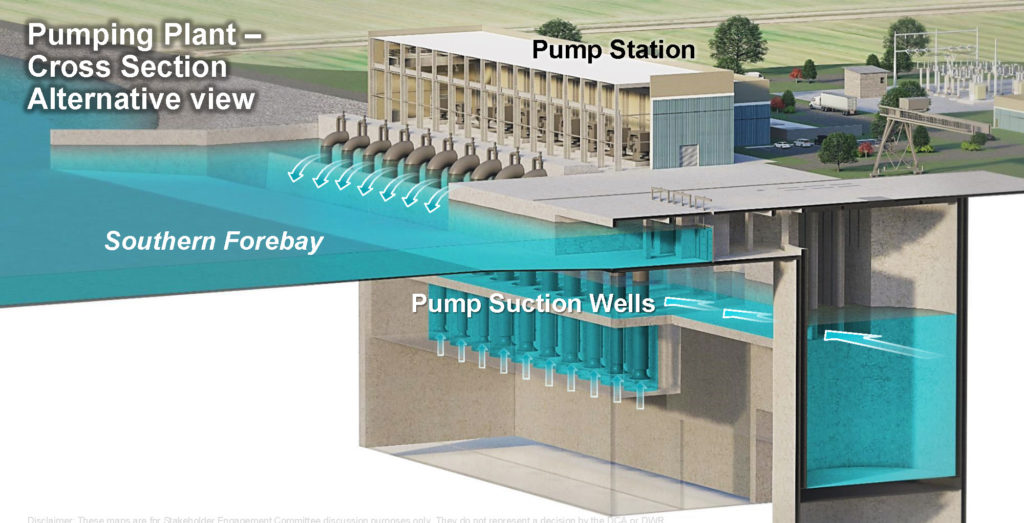
Rendering of proposed Pumping Plant at the Southern Forebay. From 2020-04-22-SECMeetingPresentation.
“Every governor has dealt with it, but Newsom is getting more traction,” he shared. “They have this portfolio plan which includes storage, moving water and ground water restoration. Not just sticking straws in the Delta and sucking it.”
“When it’s a common pool and we all have to drink out of the Delta and we all have to be responsible for it including maintaining the levees, and agriculture in the Delta,” Moran concluded.
No Committee Member Supports the Tunnel
 Asked about the members of the stakeholders committee and how they were chosen, Nazli Parvizi, the Stakeholder Engagement lead for the DCA, said, “There is not a single member on the committee who supports this project. That’s based on what they wrote in their applications and others, what they’ve said over and over during the meetings.”
Asked about the members of the stakeholders committee and how they were chosen, Nazli Parvizi, the Stakeholder Engagement lead for the DCA, said, “There is not a single member on the committee who supports this project. That’s based on what they wrote in their applications and others, what they’ve said over and over during the meetings.”
“It was an individual application. Not everybody represents their area of work. The requirement was if you live, work or recreate in the Delta in certain categories,” she explained. “If you have an ag person you balance it out with an environmental person. So, I think we have a good broad representation.”
“What we’re excited about Karen…she’s as reliable a source on waterways and boating as Jim Cox would be,” Parvizi shared.
“It’s not a voting body. We don’t make decisions as the DCA,” she explained. “We try to come up with the best engineering and design, the concepts and drawings and give them to Department of Water and it’s up to them.”
“We’re doing our best to take into account the Delta as place,” Parvizi continued. “So, they don’t just make sense from an engineering standpoint, but also as Delta as place. The folks who lead the DCA are representatives from DWR and the agencies that are members of the DCA. Kathryn Mallon, the Executive Director of the DCA is listening and took into consideration the Delta as place. The SEC is the result of that.”
About the committee members’ involvement, she said, “It’s trying to make the best of the worst, while at the same time trying to make sure it doesn’t happen. Karen has done a great job for Discovery Bay and boaters.”
“So, fight on your own time, protest, sue us, whatever and we’re OK with that and several are suing us,” said Parvizi. “We do want to make sure we are respectful of what you care about. They give us incredibly valuable feedback.”
“They fight their war, but on the battles they’re very collaborative,” she stated. “We give them all this information, being transparent as possible and half of them send it to their lawyers, which is fine. But they tell us which is better, A, B or C, and we make our recommendations to DWR.”
“We haven’t seen two groups fight it out,” Parvizi said, and explained how the members of the SEC work collaboratively. “If you move it (the tunnel) this way, it’s good for fish, but if you move it here, it’s good for birds. Or it’s good for animals. But if you put it here, it’s good for business.”
“We can come up with the pros and cons and I think that’s very valuable,” she added.
Opposition Efforts Continue
 Efforts continue to stop the new Delta tunnel by groups such as Restore the Delta that have been fighting since the twin tunnels plan was first proposed. They along with Contra Costa County and the other members of the Delta Counties Coalition, Delta residents, Delta business owners, tribal representatives, fishing and non-governmental organizations and other Delta community-based organizations have all asked the Department of Water Resources (DWR) to pause Delta tunnel planning processes that require public participation due to the impact of the coronavirus pandemic. The Department of Water Resources has refused.
Efforts continue to stop the new Delta tunnel by groups such as Restore the Delta that have been fighting since the twin tunnels plan was first proposed. They along with Contra Costa County and the other members of the Delta Counties Coalition, Delta residents, Delta business owners, tribal representatives, fishing and non-governmental organizations and other Delta community-based organizations have all asked the Department of Water Resources (DWR) to pause Delta tunnel planning processes that require public participation due to the impact of the coronavirus pandemic. The Department of Water Resources has refused.
Contra Costa is represented on the DCC by County Supervisor Karen Mitchoff.
In their letter dated April 7, 2020, the DCC wrote California Natural Resources Agency Secretary Wade Crowfoot, “The Delta Counties Coalition (DCC) respectfully requests that you direct the Department of Water Resources (DWR) to pause all Delta Conveyance Project planning and engineering design processes that require Delta stakeholder engagement during the COVID-19 crisis, until the public can fully participate. We request that you ask the Delta Conveyance Design and Construction Authority (DCA) to pause its processes that require public participation, including Stakeholder Engagement Committee meetings, so that the Delta tunnel engineering design can be informed by meaningful public input. We also ask that you direct DWR and other resource agencies to extend public comment periods by at least 45 days beyond the end of the declared emergency.” 2020-04-07-Delta Counties Coalition-Letter-to-Secty-Crowfoot-re-Stay
The Secretary Crowfoot and the Department of Water Resources has refused, but have instead allowed the DCA and SEC to hold their meetings online.
Upcoming Meetings
The next meeting of the 20-member DCA Stakeholder Engagement Committee will be held on Wednesday, July 22, 2020 from 3-6 PM. Topics are expected to include: Scoping Update (DWR), Rehabilitation of construction impacted land, Final temporary and permanent boundaries, and Intakes Update (*subject to change). Ring Central Video Conference. Information Join from PC, Mac, Linux, iOS or Android: https://meetings.ringcentral.com/j/1489140415; iPhone one-tap: US: +1(916)2627278,,1489140415#; or Telephone: US: +1(623)4049000 Meeting ID: 148 914 0415.
Ways to Stay Informed
To stay informed of plans and progress on the Delta Conveyance Project visit https://water.ca.gov/Programs/State-Water-Project/Delta-Conveyance; Twitter @CA_DWR; email DeltaConveyance@water.ca.gov; or call the Project Hotline at 866.924.9955.
Read MoreNew Probies first to graduate under pandemic conditions
By Steve Hill, Public Information Officer, Contra Costa County Fire Protection District
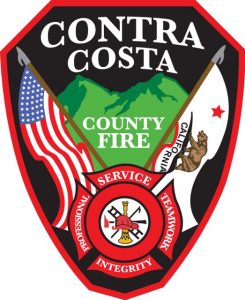 Contra Costa County Fire Protection District (Con Fire) announced Friday the graduation of its Fire Recruit Academy 55 and the addition of five new probationary firefighter-paramedics to the District’s ranks.
Contra Costa County Fire Protection District (Con Fire) announced Friday the graduation of its Fire Recruit Academy 55 and the addition of five new probationary firefighter-paramedics to the District’s ranks.
The already experienced firefighter joined Con Fire three months ago from their assignments at other well-respected fire jurisdictions. As firefighter-paramedics, they now join and bolster the District’s paramedic ranks supporting its Advanced Life Support (ALS) status with paramedic staffing on every apparatus.
Academy 55 was the first in Con Fire to be conducted entirely during the COVID-19 pandemic, resulting in significant challenges related to requirements for social distancing, health monitoring and protective equipment.
“I’m especially pleased to welcome this accomplished group of five new firefighter-paramedics who chose to join Con Fire from assignments in other fire jurisdictions,” said Lewis T. Broschard III, fire chief, Contra Costa County Fire Protection District. “After their just-completed rigorous fire recruit academy training program they are exceptionally well prepared to step into new roles later next week as probationary firefighter-paramedics in fire stations across our District.”
“As members of this lateral academy, we sought out Con Fire because we wanted more, we wanted to be the best,” said Probationary Firefighter-Paramedic Matthew Pagan. “We have worked hard, trained hard and studied hard to get to today and that is why we came to Con Fire; we wanted tougher, we wanted stronger and we wanted it to be challenging.”
The graduating recruits underwent a physically and mentally challenging 12-week course of instruction using the latest firefighting and training techniques. In addition to basic structure firefighting techniques, recruits honed wildland fire, rescue, automobile extrication, hazardous materials and other techniques they can be expected to put to use in their first assignments.
Immediately prior to graduation, the recruits participated in the traditional end-of-academy “crucible” exercise, a realistic 48-hour period designed to replicate what they will soon face in actual shifts In their assignments as Con Fire probationary firefighters. The crucible exercise included numerous simulated incident responses and concluded with deployment to a training wildfire fire atop Mt. Diablo’s Eagle Peak, which required a six-plus mile hike in full wildland fire gear.
The graduation ceremony was virtual except for a limited number of family members and was held at Con Fire’s training grounds in Concord. Each graduate was “pinned” with their firefighter badge and sworn in as a probationary firefighter-paramedic.
About Contra Costa County Fire Protection District (Con Fire) — A recognized fire service leader — Con Fire provides fire and emergency medical services to more than a million people across its 304 square-mile District area, and through mutual aid, in and around the 20 cities and unincorporated communities of Contra Costa County, California. With few exceptions, county emergency ambulance transport services are provided by Con Fire through its unique sub-contractor Alliance model. In 2019, the District responded to nearly 78,000 fire and EMS emergencies and dispatched some 95,000 ambulances, providing expert medical care on more than 74,000 ambulance transports. The District, with 26 fire stations and more than 400 employees, is dedicated to preserving life, property and the environment.
Read MoreBy Allen Payton
During an announcement, today Governor Gavin Newsom said schools in counties not on the state’s monitoring list can reopen for in-person. But schools in counties on the monitor list must be off the list for 14 consecutive days before being able to reopen. According to a slide he shared, a total of 32 of the state’s 58 counties have been on the state’s monitoring list for 3+ days. Contra Costa continues to be on the state’s monitoring list of counties. The order includes both public and private schools.
“It’s very personal to me as a father of four, 10 years of age or younger, to the 6.15 million kids who are part of the public school education system and the 625,000 adults…who are looking forward to getting back to school…and us parents getting back to work…and to so many other responsibilities as parents and caregivers,” Newsom started off.
Governor Gavin Newsom announces #COVID19 guidance for schools and provide an update on the state’s response to the pandemic.
Posted by California Governor on Friday, July 17, 2020
He spoke of and provided slides explaining the specific recommendations and guidance.
“Schools must provide meaningful instruction during this pandemic whether they are open…or not,” Newsom said.
He spoke of the health of school staff. “We have to have their backs, as well,” he stated. “Safety is foundational.”
Newsom then shared his Five Principles:
- Safe in-person school based on local data
- Mask requirements
- Physical distancing + other adaptations
- Regular testing + dedicated contact tracing
- Rigorous distance learning
“Schools can physically open when the county they are operating in are off the state’s monitoring list for 14 consecutive days,” Newsom announced. ‘However, schools that don’t meet this requirement, they must begin the school year, this fall with distance learning.”
He then spoke of the other four principles.
“All school staff and students third grade and above must wear masks,” he stated. “Students second grade and below we encourage to wear masks or face shields.”
“On the physical distancing side, it’s incumbent upon staff to physically distance at least six feet,” Newsom said.
“The school day should start with symptom checks, temperature checks,” he continued.
Newsom spoke of requirements to test staff regularly, with the state contact tracing workforce of 10,000 people who will prioritize schools, according to one of the slides.
“Distance learning…access to devices. We have put up money for districts to purchase devices…to address this yawning gap in technology and connectivity,” he shared.
“We want to create a challenging environment where assignments are equivalent to what they would get in a classroom environment,” Newsom added.
He spoke of challenges with a breakout of the virus. If the school has cases of more than 5% positive, then we mandate that school close. If 25% of the schools in a district have 5% positive cases, the district must close all schools for 14 days, he explained.
“Learning remains non-negotiable. But neither is safety of all of our cohorts of support staff as well as our children,” Newsom said before sharing the latest statewide COVID-19 statistics.
“None of us want to see education virtualized, at least I don’t,” he said. “The one thing we have the power to do to get our kids back into school is, look at this list, again. Wear a mask, physically distance, wash your hands, minimize the mixing.”
“The more we do on this list and we do it on scale the quicker all those counties will get off the monitoring list…and those kids are back in school,” Newsom stated. “It’s incumbent upon us to practice…what we preach as individuals…to model the behavior that can actually extinguish this virus,”
“I saw one study…if every American wore a mask in just a number of weeks, we’ll have dramatically bent the curve,” he said. “I don’t know if that’s too much to ask.”
“Go to that covid19.ca.gov website…to learn more about these continuity plans, Local Continuity Attendance Plans (LCAP),” Newsom concluded before opening up for a question and answer session.
Read MoreBy Scott Alonso, Public Information Officer, Contra Costa District Attorney
The Contra Costa County District Attorney’s Office charged Joseph Osuna (30-year-old Martinez resident) with three criminal counts, including two felonies, for his alleged action of the unlawful possession of a firearm by a prohibited person on Sunday, July 5. Osuna drove by the Black lives matter street mural in downtown Martinez and yelled at various individuals standing by the mural.
One of the bystanders exchanged words with Osuna. Moments later, Osuna made a u-turn to come back to the bystander. Osuna exited his vehicle and pulled out a loaded revolver and pointed the firearm at the bystander. Fortunately, police officers from the Martinez Police Department were nearby and were able to respond to the scene.
Osuna’s 2015 Jeep Wrangler was quickly spotted, and he was pulled over by the police. When Osuna was stopped, the police recovered the revolver in his vehicle. The firearm was not registered to Osuna.
He faces up to three years in custody if found guilty of his actions.
The alleged offenses again Osuna are as follows:
- Unlawful Firearm Activity, Felony PC 29805
- Possessing Firearm Not Registered to Owner, Felony PC 25850 (a)/(c) 6
- Exhibiting a Concealed Weapon in Public, Misdemeanor PC 417 (a)(2)(A)
Case information: People v. Joseph Daniel Osuna Docket Number 01-194090-7
Read MoreAndersen only no vote on tax increase measure; support Martizians for Black Lives and mural; approve Grand Jury report on wildfire preparedness; finalize recruitment process for new County Administrator
By Daniel Borsuk
 Just as Contra Costa County’s top public health official Anna Roth informed the Contra Costa County Board of Supervisors on Tuesday the number of COVID-19 positive cases has risen to 2,586 cases, an increase from 92 cases three weeks earlier, and with 79 COVID -19 stricken patients in county hospitals, up from 35 patients in county hospital six weeks previously, Supervisors reacted swiftly by extending a county-wide ordinance prohibiting rental evictions and rental increases until September 30.
Just as Contra Costa County’s top public health official Anna Roth informed the Contra Costa County Board of Supervisors on Tuesday the number of COVID-19 positive cases has risen to 2,586 cases, an increase from 92 cases three weeks earlier, and with 79 COVID -19 stricken patients in county hospitals, up from 35 patients in county hospital six weeks previously, Supervisors reacted swiftly by extending a county-wide ordinance prohibiting rental evictions and rental increases until September 30.
Supervisors received overwhelming telephone citizen support to extend the ordinance’s benefits to renters and small businessowners two and half months during Tuesday’s teleconference meeting. The ordinance that had protected tenants from evictions and rent increases would have expired on Wednesday, July 15.
The new ordinance won unanimous support from supervisors.
“The emergency is not over with the COVID 19 pandemic. The economic impact our residents face has not subsided, said Board Chair Candace Andersen in a statement. “We sincerely hope passage of this new ordinance to extend the eviction protection of rent freeze will continue to protect renters and small businesses even as landlords and renters work together to have tenants pay what they can over a longer period of time.
The ordinance contains a no-fault provision that landlords cannot increase the rent on a residential property until Sept. 30, Andersen said in her statement. It applies to all 19 cities in the county as well as all unincorporated areas.
Support Placing Half-Cent Sales Tax Increase on Ballot on Split Vote
The Supervisors, on a 4-1 vote, also flashed the green light to allow county officials to proceed in drafting a county-wide ballot measure possibly for the November election for a half-cent sales tax increase to support county services.
Supervisors reviewed findings from a poll that cost $10,000 and conducted by FM3 Research that found among 666 persons who were polled, “To keep Contra Costa’s regional hospital open and staff; fund community health centers; provide timely fire and emergency response; support crucial safety-net services; invest in early childhood services; protect vulnerable populations; and for other essential county services, shall the Contra Costa County measure levying a half-cent sales tax, exempting food sales, providing an estimated $81,000,000 annually that the State cannot take, requiring fiscal accountability, with funds benefitting County residents, be adopted?”
The FM3 Research poll found that 62 percent of the respondents would possibly support a tax measure, 31 percent oppose, and 7 percent had no response.
Board Chair Candace Andersen, who represents District 2, cast the lone no vote against the sales tax proposal saying she had “serious concerns” about the measure. The supervisor from Danville said “it would add further tax burdens to families now stressed by the economic impacts of the COVID 19 pandemic restrictions.”
“A sales tax is the most regressive form of taxation for those who can least afford it. I think the timing is really, really off,” she added.
But District 1 Supervisor John Gioia of Richmond, who has constantly defended the need for a countywide sales tax to support county services, said, “The need is more apparent now that county services are underfunded and need additional tax support.”
The tax increase would require support of a 50% plus one simple majority of voters to pass. The Supervisors have until August 7 to place the measure on the November ballot. According to the Contra Costa County Elections website, supporters and opponents would have until August 19 to file Arguments in Favor or Against and until August 24 to file rebuttals.
Support Martizians for Black Lives & Mural
Supervisors approved, without opposition, a resolution “supporting Martizians for Black Lives in their legal public commentary through their ‘Blacks Lives Matter’ mural, and strongly condemns those who illegally deface this mural as a racist and illegal act.” The resolution is in reference to the Black Lives Matter mural that was painted and temporarily defaced in front of the Martinez court house with black paint by a woman and assisted by a man, who said they were defacing the mural with comments such as “Racism is a lie,” “There is no racism,” “This is not happening in my town, “ “No one wants Black Lives Matter,” and “All lives matter.”
Contra Costa District Attorney Diana Becton stated, “The mural completed last weekend was a peaceful and powerful way to communicate the importance of Black lives in Contra Costa County and the country. We must continue to elevate discussions and actually listen to one another in an effort to heal our community and country.”
Grand Jury Report on Wildfire Preparedness
A Grand Jury Report, “Wildfire Preparedness in Contra Costa County,” was approved as a consent item, but among the panel’s recommendations were:
“The Board of Directors of Contra Costa County Fire Protection District, East Contra Costa Fire Protection District, Rodeo-Hercules Fire Protection District, and San Ramon Valley Fire Protection District should consider directing their Fire Chief to update wildfire evacuation plans and incorporate pre-determined polygons and advanced routing technology, by June 30, 2021.”
The Grand Jury Report also states directors of the five county fire districts “should consider identifying funds to adopt or expand the use of new technologies, such as ground sensors, drones, satellites, and fire spotting cameras, to help detect fires in high-risk areas by June 30, 2021.”
Additionally, the report recommends that directors of the Contra Costa County Fire Protection District, East Contra Costa Fire Protection District, Moraga-Orinda Fire Protection District and Rodeo-Hercules Fire Protection District should review and consider an ordinance similar to the one the San Ramon Valley Fire Protection District passed that would enable their fire district to recover labor and equipment costs from PG&E for overseeing electrical utility work that presents a high fire risk by June 30, 2021. “
In other action, supervisors approved the sale of two parcels of county owned land at 1750 Oak Park Blvd. and 75 Santa Barbara Road, that is the site of the former Pleasant Hill Library, for $13.8 million to developer Davidon Homes. The site is part of a proposed development calling for the construction of a new City-owned library, 34 single-family homes, and open space. No one spoke either in opposition or in favor of the sale.
Finalize Recruitment Process for New County Administrator
Supervisors also authorized recruitment consultant Peckham & McKenney, a Sacramento firm that supervisors had hired to recruit a new County Administrator to replace David Twa, who will retire at the end of this year to begin the recruitment process. The supervisors had approved a $30,500 contract last month with Peckham & McKenney.
The successful candidate could earn an annual salary of as much as $381,000.
The recruiter has proposed a schedule that includes resume deadline of Sept. 22, preliminary interview running from Sept. 23 through Oct. 9, Recommendations of Candidates on Oct. 13, Interview – First Round the week of Oct. 26 and Second Round the week of Nov. 2.
The recruiters work is slated to be completed with the successful replacement of a new county administrator before Jan. 31, 2021, the end of the contract with Peckham & McKenney.
Read MoreAntioch real estate broker challenges the legality
By Susan Shiu, Director, Office of Communications and Media, Contra Costa County
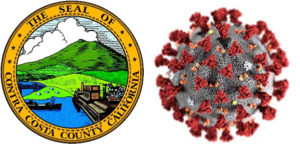 (Martinez, CA) – At a special Board meeting on July 14, 2020, the Contra Costa County Board of Supervisors unanimously passed an urgency ordinance that continues an eviction moratorium for residential tenants and small businesses in the County through September 30, 2020. The urgency ordinance also continues a moratorium on certain residential rent increases through September 30, 2020.
(Martinez, CA) – At a special Board meeting on July 14, 2020, the Contra Costa County Board of Supervisors unanimously passed an urgency ordinance that continues an eviction moratorium for residential tenants and small businesses in the County through September 30, 2020. The urgency ordinance also continues a moratorium on certain residential rent increases through September 30, 2020.
The new ordinance temporarily prohibits evictions of residential tenants in Contra Costa County impacted by the COVID-19 pandemic. The eviction moratorium also applies to tenants who are small businesses or non-profit organizations. A small business is an independently owned and operated business that is not dominant in its field of operation, has its principal office in California, has 100 or fewer employees, and has average annual gross receipts of $15 million or less over the previous three years.
“The emergency is not over with the COVID-19 pandemic. The economic impact our residents face has not subsided,” said Supervisor Candace Andersen, Board Chair. “We sincerely hope passage of this new ordinance to extend the eviction protection and rent freeze will continue to protect renters and small businesses, even as landlords and renters work together to have tenants pay what they can over a longer period of time.”
This law applies to properties in all 19 cities in the County and in all unincorporated areas. To the extent that a city has adopted a law on the same subject matter, then the city’s provisions would apply in that city.
Protections granted to residential renters and small businesses include:
- Prohibition on Evictions Due to Unpaid Rent – A property owner cannot evict a residential tenant or small business tenant for failure to pay rent if a tenant demonstrates loss of income or out-of-pocket medical expenses related to COVID-19. This prohibition lasts through September 30, 2020.
- Ban on No-Fault Evictions – A property owner cannot evict a residential tenant or small business tenant for any “no-fault” reason except to protect the health and safety of the owner or another tenant, to allow the owner or their immediate family to move into the residential unit or to remove the unit from the rental market. This ban lasts through September 30, 2020.
- Grace Period to Pay Back Rent – Residential tenants or small business tenants who demonstrate loss of income or out-of-pocket medical expenses related to COVID-19 have until January 31, 2021 to pay past due rent. This does not relieve a tenant of their obligation to pay rent.
- No Late Fees – A property owner may not charge or collect late fees for unpaid rent from a residential tenant or small business tenant who demonstrates loss of income or out-of-pocket medical expenses related to COVID-19. This ban on late fees extends until January 31, 2021.
- Moratorium on Residential Rent Increases – A property owner may not increase rent on a residential property through September 30, 2020. State law prevents this freeze from applying to commercial tenancies and to certain residential properties, including residences built within the last 15 years and single family homes.
Read the full document Ordinance No. 2020-20 (PDF). Answers to Frequently Asked Questions (FAQs) regarding this ordinance will be available and updated on the County website soon.
Mark Jordan, an Antioch real estate broker who is suing the City of Antioch over their rent moratorium, emailed the Supervisors on Monday.
On 7/13/20, 12:52 PM, he wrote:
“Supervisors of the County of Contra Costa,
I am informed that on July 14, 2020 you as a Board shall consider if the Urgency Ordinance No. 2020-20 should be extended.
YOU SHOULD NOT EXTEND THIS URGENCY ORDINANCE.
- You have made no adjustments or given consideration to the damage done to landlords. You have not offered any tax relief. There exist significant questions of “equal protection under the law”.
- There is abuse of the situation by tenants not directly effected (sic) by the underlying pandemic.
- Courts are not open to Landlords to remove tenants for any matter. See California Judicial Council Directive. Other protections exist for maintaining “Shelter in Place”.
- The Urgency Ordinance is not specific enough as to what is a tenant “demonstration” or “substantial loss of income”.
5. While your Counsel notes “Pending Legislation” your attorney does not inform you of the numerous filed lawsuits against the California Judicial Council, Counties and or Municipalities. There exist significant questions of “due process” and “equal protection”” both as to the Federal and State Constitutions.
Therefore, it would be a prudent decision to allow the Urgency Ordinance No. 2020-20 to expire and that the Ordinance be concluded with the grace period beginning on July 15th.
Sincerely,
Mark Jordan”
In response, Supervisor Karen Mitchoff who represents Central County in District 4 wrote,
“Dear Mr. Jordan,
Thank you for your email regarding the extension of the Rent increase and Eviction moratorium. Yesterday, the Board of Supervisors unanimously passed ordinance 2020-20, which continues the eviction moratorium for residential tenants and small businesses in Contra Costa County through September 30th, 2020. This urgency ordinance also continues a moratorium on certain residential rent increases through the same date.”
She then listed and repeated the various parts of the ordinance.
“This law applies to properties in all 19 cities in the County and in all unincorporated areas.
As we get closer to September 30, the Board of Supervisors will re-evaluate the moratorium given the changing dynamics presented by the COVID-19 pandemic, as well as pending legislation on a state and federal level relative to this topic. We continue to share with our state and federal partners the diversity of resources needed in our communities across the county.
While there were calls to extend the moratorium to 90 days after the Governor’s state of emergency has ended, we still have many small landlords throughout Contra Costa County. I have continually advocated to limit the grace period for repayment to 120 days because we must balance the needs of both landlords as well as renters. Additionally, in protecting tenants across the county, we have been advised by County Counsel that providing specific dates for expiry of the ordinance and for repayment makes our moratorium more readily defensible against potential legal challenges brought against it. With the rise in community spread of COVID-19, the Board of Supervisors are doing all we can to support struggling families and individuals across the county.
I hope you and your family are safe and healthy.
Sincerely,
Karen Mitchoff”
For information and resources, visit Contra Costa County at www.contracosta.ca.gov. For COVID-19 updates, visit Contra Costa Health Services at https://cchealth.org/coronavirus. If you have questions about the coronavirus, contact the multilingual Call Center 1-844-729-8410, open daily from 8 am to 5 pm (available in English and Spanish). For assistance after hours in multiple languages, please call 211 or 800-833-2900 or text HOPE to 20121.
Read Morehttps://www.youtube.com/watch?v=VIjnkkZQWhU
Start video at the 58 minutes mark.
Delivers Remarks on the Rebuilding of America’s Infrastructure: Faster, Better, Stronger
For the first time in 40 years, President Trump is taking action to right-size the Federal Government’s environmental review process to accelerate America’s infrastructure development
“By streamlining infrastructure approvals, we’ll further expand America’s unprecedented economic boom.” – President Donald J. Trump
On Wednesday, July 15, 2020 at the UPS Hapeville Airport Hub in Atlanta, Georgia, President Donald Trump offered the following remarks announcing a streamlined, modernized environmental review process to accelerate infrastructure projects in America.
“For decades, the single biggest obstacle to building a modern transportation system has been the mountains and mountains of bureaucratic red tape in Washington, D.C. Before I took office, reviews for highways ballooned to an average of nearly 750 pages in length. And they were the good ones; they were the short ones.

Pres. Trump and the environmental review process charts, old on the right and the new, One Federal Decision policy process on the left. Video screenshot of his remarks July 15, 2020.
And I know because I was in business for a long time, and I had to go through a process that was so ridiculous. It was so ridiculous. We went through a process for building buildings, usually. It would take forever. By the time you’d start building, the market changed. You said, “You know, the market was good when we started; now the market is lousy.” So you’d say, “The hell with it. We won’t build.” Sometimes you’d start building and you’d say, “That was a mistake.”
But we went through years and years of litigation and tumult, and it was just not good. But you go through it to an even greater extent.
The maze-like approval process represented lobbyists that were very rich; they were making a lot of money. I remember I’d go up to Albany, New York, and I’d see my lobbyists up there. I said, “What are you doing here?” I knew what they were doing. They were trying to make it more difficult. So you had to hire them for more and more work, spend millions and millions of dollars for nothing.
But too often, they caused massive delays, on top of everything else. And that way, they got their fees over a longer period of time. It’s one of the reasons why, for example, the average Atlanta driver spends an incredible 77 hours in traffic during a short period of time.
But all of that ends today. We’re doing something very dramatic. (Applause.) We just completed an unprecedented — and I don’t want to say it’s absolutely unprecedented — top-to- bottom overhaul — should have been done years ago — of the infrastructure approval process; this approval process that has cost trillions of dollars over the years for our country and delays like you wouldn’t believe.
This is a truly historic breakthrough, which means better roads, bridges, tunnels, and highways for every UPS driver and every citizen all across our land. Together, we’re reclaiming America’s proud heritage as a nation of builders and a nation that can get things done, because with these horrible roadblocks that were put in front of us, you couldn’t get it done. No matter how good you were, you couldn’t get it done. You’d wait and wait. You’d go to the next step. You’d say, ‘You can’t start the next step until you finish the first.’”
“Today’s action is part of my administration’s fierce commitment to slashing the web of needless bureaucracy that is holding back our citizens. I’ve been wanting to do this from day one. And we started it on day one — literally, on day one — but it takes a long time. You have statutory requirements; you have a lot of different roadblocks even to changing it. But the change you’ll be hearing about in a minute. And it’s one of the biggest things we can be doing for our country.
The last administration increased the Federal Register by 16,000 pages of job-killing regulations. Under my administration, we have cut the Federal Register by nearly 25,000 pages, more than any President in history, whether it’s four years, eight years, or in one case, more. And we, frankly — this, I would think, is maybe the biggest of all. We did the U.S. Waters — you saw that. The U.S. Waters Act. That was a big one. That was a big one. (Applause.)
I thought I was going to take a lot of heat when I did that, and instead it was just the opposite. People came up — grown men that had never cried, even when they were a baby — they were standing behind me when I signed that bill at the White House, and they were crying. They were crying — because we gave their life back to them. That took their life away. It took their livelihood away. It was a big, big moment.
But this is a big moment today too — probably, possibly equally as big. Today’s action completely modernizes the environmental review process under the National Environmental Policy Act of 1969. We are cutting the federal permitting timeline from a staggering 10 years, 15 years, 18 years, 21 years — you know the story; you’ve seen it — projects that start out. A young guy heads the project. By the time it gets approved or disapproved — in many cases, disapproved; usually disapproved — he’s getting ready to retire.
‘So what did you do for your life?’ ‘I worked on one project. We didn’t get it through in the end.’ No, we won’t get certain projects through for environmental reasons; they have to be environmentally sound. But you know what? We’re going to know in a year. We’re going to know in a year and a half. We’re not going to know in 20 years.
So we’re cutting the federal permitting timeline for a major project from up to 20 years or more — hard to believe — down to two years or less. So we have it down to about two years right now, Elaine, and I think two years or less. And our goal is one year. And you may get disapproved. It may — they may vote, at the end, they didn’t like something environmentally or safety-wise, and I’m all for that, but you’re not going to devote a lifetime to doing a project that doesn’t get approved or that gets approved.
And oftentimes, when it gets approved, it comes in at 10, 20, 30 times the cost. There’s a highway in a certain state — a short road, not even a highway, I guess; more of a roadway. And they put in. It was a straight line from point to point. By the time they finished it, 18 years later, it was this. It cost tens of times. It cost many, many, many times more than the original. It’s a dangerous roadway because there’s turns. You got to be in good shape. You got to be wide awake to make those turns. You got to see those things. You have to see the guardrails. Bom. They had a simple, straight roadway, and now they build it — they end up — it took 17 years to get it approved. Ended up costing many, many times what the original estimates were, and it’s no good. It’s not good.
Under the last administration, a mere 7 percent of reviews for federal highways were processed within two years. Now what we’re doing is the two years won’t be the exception; it’ll be the rule. So what we’re doing is, we’re going to have that coming down at a much steeper rate. This will reduce approval times for highways alone by at least 70 percent. But the 70 percent is a very unambitious number because the number is going to be actually much lower than that.
At the heart of the reforms is the One Federal Decision policy. It really spells it out when you hear that name: One Federal Decision. Before, applicants for infrastructure permits were forced to spend years and years navigating a labyrinth of federal agencies, and every single one had a power to stop a project. Anytime you went to an agency, they had a power to stop it. And it would stop the project — not only stop it; but right in its tracks it would stop it.
With our reforms, there will be one quick and fair decision. We’re going to give every project a clear answer: Yes or no. Yes or no. The two-year process, where just to submit is two years, is not acceptable. It’s going to be a very quick ‘yes’ or ‘no,’ after study, but the studies are going to go quickly and they’re going to go simultaneously.
So if you’re in numerous agencies, you’re all going at the same time. Instead of waiting for one, for two, for three — and oftentimes, you’d go through one, it would take you six months, and then you have to wait 90 days, and then you have a review period, and then you start the second one. And now you go for another four months, and then you wait 90 days, and you have a review period. And sometimes you had to go through 9, 10, 12 different agencies. So even if you did absolute rapid, it was many, many years before you could even think about starting it.
We have up here, by the way — that’s a chart of the old system and the new system. And I think the new system is better. (Applause.) I think it’s better not only in time; I think it’s better in terms of the process, and I think it’s better in terms of the importance from an environmental and a safety standpoint.
But take a look at that. This is what you had to go through. In fact, it was much more dramatic when I first came up with this about a year ago. We took that and we rolled it out. It was so dramatic. And it just kept going and going. So the difference is that. And many of those steps, you had to wait before you could even think about going to the next one, and you had to get full approvals.
Any one of those colors, where there was a problem or a rejection, meant it was dead. And now you go through this very simple, but very comprehensive solution. And it’s a beautiful thing, especially if you understand construction and building, and other things beyond building, like I do.
At the same time, we’ll maintain America’s gold standard environmental protections. The United States will continue to have among the very cleanest air and cleanest water on Earth — which we do now.”
MODERNIZING ENVIRONMENTAL REVIEWS: For the first time in 40 years, President Donald J. Trump is taking action to right-size the Federal Government’s environmental review process.
- The Trump Administration is issuing a final rule that will modernize and accelerate environmental reviews under the National Environmental Policy Act (NEPA), so that infrastructure can be built in a timely, efficient, and affordable manner.
- This marks the end of a multi-year review, which produced more than 1.1 million public comments and involved a broad range of stakeholders.
- The final rule modernizes Federal NEPA regulations, including by codifying certain court decisions to clarify NEPA’s application and by expanding public involvement in NEPA reviews through the use of modern technology.
- The rule also improves management by incorporating President Trump’s One Federal Decision policy, establishing time limits of two years for completion of environmental impact statements, when required, and one year for completion of environmental assessments.
- Together, these common sense reforms will slash unnecessary government bureaucracy and accelerate important infrastructure projects all across the Nation.
STREAMLINING INFRASTRUCTURE APPROVALS: The Federal environmental review process has historically been far too complex, costly, and time consuming.
- Since NEPA’s enactment, the environmental review process has been burdensome for both Federal agencies conducting reviews and Americans seeking permits or approvals.
- Environmental impact statements average over 650 pages, and it takes Federal agencies on average four and a half years to conduct required reviews.
- According to the Council on Environmental Quality, environmental impact statements for highway projects take more than seven years on average and often take a decade or more.
- NEPA reviews are also frequently challenged in court, making it very challenging for businesses and communities to plan, finance, and build projects in the United States.
CUTTING RED TAPE: President Trump is reversing years of burdensome overregulation and administrative abuse, simultaneously ensuring meaningful environmental reviews and spurring economic growth.
- President Trump is making good on his promise to conduct historic deregulation, removing job killing regulations that have stifled economic growth for far too long.
- Already the President has reversed burdensome regulations like the Obama Administration’s Waters of the United States rule and Corporate Average Fuel Economy (CAFE) standards.
- President Trump also did away with the Obama Administration’s expensive, heavy handed, and job-killing Clean Power Plan, replacing it with the much improved Affordable Clean Energy (ACE) Rule.
- The President launched his Governors’ Initiative on Regulatory Innovation to cut outdated regulations, put people over paperwork, and align Federal and State regulations.
- Under President Trump, the United States has remained a world leader in protecting the environment and reducing greenhouse gas emissions, while becoming the largest producer of oil and natural gas in the world.
Read More
Executive search firm hired, draft recruitment brochure created
By Allen Payton
During their special meeting on Tuesday, July 14, the Contra Costa County Board of Supervisors will discuss the recruitment process to replace retiring County Administrator David Twa, as well as the opportunity for public input into desirable qualifications for the ideal candidate. That’s in spite of the fact a recruitment brochure for the position from the recruiting firm Peckham & McKenney Executive Search, included with the meeting agenda, already describes “The Ideal Candidate,” as follows:
“You will be a well-rounded visionary leader with a strong business sense, financial acumen, and the ability to manage a large, complex organization using best practices culled from government and business environments. You must be politically astute, yet apolitical and will have an outgoing style with a professional presence. You will be naturally engaging, diplomatic, and decisive. You will also be a gifted consensus and team builder, will exercise emotional intelligence in the practice of leadership, will be committed to developing staff to their greatest potential, and will be adept in long range planning for the organization. Additionally, in today’s times, you must be a confident and courageous leader who displays sound judgment, excellent communication and people skills, strong character and uncompromising integrity. You will also have an awareness of and respect for cultural diversity, be effective and responsive in politically and ethnically diverse environments and accomplished at maintaining cooperative relations with diverse communities. Polarizing politics, changing demographic trends, increased reliance on technology and social media, and serious economic volatility are some of the current issues that you and the County will face in the next few years. Overriding these issues is the County’s desire to continue working through the current pandemic via best practices that both protect the residents and the economy, as well as addressing race and ethnicity issues in one of the most diverse counties in the state. You will work with the Board of Supervisors to identify disparities that exist in justice, health, social services and land use and will oversee strategies to reduce those disparities.”
According to the brochure, the annual salary for the position is currently $381,000. However, the salary for Twa’s replacement will be determined based on the experience and qualifications that person brings to the county.
The administrator oversees 25 different departments within the county government divided into service areas such as: Public Protection, General Government, Health and Human Services, Growth Management, Special Districts and other Authorities. There are also a number of Affiliated Organizations the County participates with or directly manages. Contra Costa County is one of the few counties in the Nation to offer a full spectrum of health-related services under one organizational structure including the Contra Costa Regional Medical Center and its health centers.
The confirmed recruitment process schedule is as follows:
Resume filing deadline – September 22, 2020
Preliminary interviews – September 23-October 9, 2020
Recommendation of Candidates – October 13, 2020
Interview Process – First Round: week of October 26, 2020
Interview Process – Second Round: week of November 2, 2020
When reached for comment Board of Supervisors Chair Candace Andersen said, “David Twa has been hinting he’s ready to retire for the past six months. On June 2nd when we did his annual evaluation during the closed session, at that point he did say, ‘I am going to leave…here are a couple recruitment firms the county has used in the past.’”
“He’s been making it known to community groups and that he wants to return to Minnesota,” she shared.
“Under agenda item C65 of our meeting on June 16th, we did go ahead and hire the recruiting firm,” Andersen continued. “There was a desire by (Supervisor) John Gioia who wants to make this a very public process. The county administrator and county counsel hiring process is not usually a public process, with candidates who don’t get hired not wanting to be known. You want to have the confidentiality.”
“So, we’ve come forward with the brochure and asking for public input,” she stated. “This is the draft of the brochure, so if someone comes up with a desired qualification that makes sense, we can add that to it.”
“We’re hoping by late fall to hire someone, and have an overlap to work with David,” Andersen shared. “We’re really focusing our recruitment on California rather than a national search…ideally someone who has a background in California law.”
“We’re not being secretive about it. Once we have the recruiting brochure finalized, then we’ll issue a public announcement,” Andersen added. “It’s an interesting, challenging time to bring on a new administrator.”
Tuesday’s meeting begins at 8:30 a.m. and can be viewed live on Comcast Cable 27, ATT/U-Verse Channel 99, and WAVE Channel 32, and can be seen live online at www.contracosta.ca.gov.
Those who wish to address the board during public comment or with respect to any item that is on the agenda may call in during the meeting by dialing 888-251-2949 followed by the access code 1672589#. To indicate you wish to speak on an agenda item, please push “#2” on your phone.
Read MoreGovernor Gavin Newsom provides an update on the state’s response to #COVID19.
Posted by California Governor on Monday, July 13, 2020
“We’re turning back into a modification mode of our stay-at-home order.” – Gov. Newsom
Order affects some activities, businesses in Contra Costa County
By Allen Payton
“Looking at the conditions…based on the trend lines, based on the science…increased positivity rates…increased hospitalizations,” California Governor Gavin Newsom announced today he is using a “dimmer switch” for statewide actions.
“We are requiring all counties to close their indoor activities, including restaurants, wineries, tasting rooms, movie theaters, family entertainment centers, zoos and museums, card rooms and the shuttering of all bars,” he stated.
It applies to all counties, not just those on the monitoring list. However, all of those activities have already been closed in Contra Costa County, so that part of Newsom’s order doesn’t affect those in our county.
The governor called for the expansion of “opportunities for outdoor operations,” but didn’t elaborate.
 He shared additional sectors that must be shuttered in the counties on the monitoring list, of which Contra Costa County is one.
He shared additional sectors that must be shuttered in the counties on the monitoring list, of which Contra Costa County is one.
“For all the counties on the monitoring list we are directing they close indoor operations in additional sectors: fitness centers, places of worship, offices for non-critical sectors, personal care services, that includes hair salons and barber shops, and indoor malls” Newsom stated.
“It’s a dynamic list. Counties come on, counties come off,” he said.
Newsome spoke of the increasing number of cases, positivity rate, hospitalizations and ICU admissions.
“As of yesterday, in the latest reporting periods, we had 8,358 cases. For the seven-day average there were 8,211 new cases per day,” he shared. “So, you see that seven-day average trending up.”
“The positivity rate has settled in and…over a 14-day period is 7.4%, over a 7-day period it’s 7.7%,” he explained. “This represents a 21% increase in positivity rate over a seven-day period.”
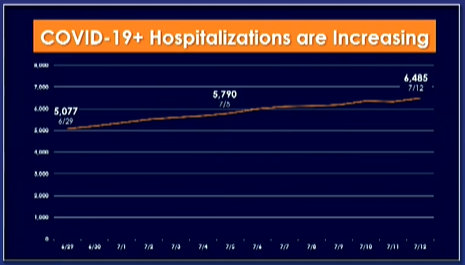 He also spoke of an increase in hospitalizations and ICU admissions.
He also spoke of an increase in hospitalizations and ICU admissions.
“We’re seeing a modest reduction in the rate of growth…in the total number of people hospitalized,” Newsom stated.
“That represents a 20% increase over a two-week period, last week it was a 39% increase over a two-week period,” he said.
Newsom then reiterated wearing of masks, and said, “we’ll get through this” and thanked everyone “from the bottom of my heart for your perseverance, for your patience” and called on Californians to “our need to maintain our vigilance” and “continue to do the good work we’ve done as a state…so we can work through this, get to the other side more resilient, more capable than ever.”
Newsom then held a question and answer session.
According to a County Health Services press release, California COVID-19 closures affect some Contra Costa businesses.
Due to a sharp rise in COVID-19 activity, California Governor Gavin Newsom today announced the temporary closure of several types of indoor businesses and activities.
Effective immediately, all counties must close dine-in restaurants, bars, wineries and tasting rooms, movie theaters, family entertainment centers such as bowling alleys and arcades, zoos and museums, and cardrooms.
None of these types of businesses had previously reopened under Contra Costa County’s social distancing ordinance and must remain closed under the state order.
Breweries, brewpubs and pubs must “close all operations indoor and outdoor statewide,” according to the state’s COVID-19 web page.
Additionally, Gov. Newsom required counties that have remained on the California Department of Public Health’s county monitoring list for three or more consecutive days to close additional businesses and activities, effective immediately.
Contra Costa does meet the criteria, so this part of the governor’s order does apply to the county. Some businesses and activities that had previously been permitted in the county are affected:
- Offices for “non-essential” business sectors, as determined by the state – visit ca.govfor more information when it becomes available.
- Hair salons and barber shops
- Indoor malls
All of these businesses and activities are required by the state to close today unless their operation can be modified to be outside or by pickup.
Other businesses and activities required by the state to close in watch-list counties include indoor worship services and indoor protests, which Contra Costa also suspended with its own local order effective today.
Fitness centers and personal care services, such as nail salons and tattoo parlors, were also named in the state order but had not previously reopened in the county.
For more information about today’s order from California, visit covid19.ca.gov.
Contra Costa Health Services urges everyone to continue taking simple steps to protect themselves from COVID-19: Follow the social distancing order, and wear a face covering when you leave home or when you are near other people. Wash your hands thoroughly and frequently, and always stay home from work or school if you are not feeling well.
Visit cchealth.org/coronavirus for local information about Contra Costa’s response to the COVID-19 pandemic.
Read More







